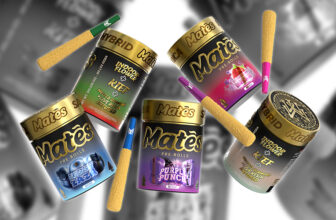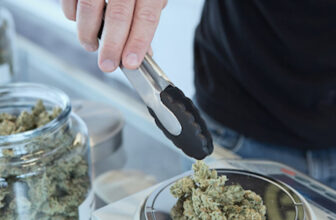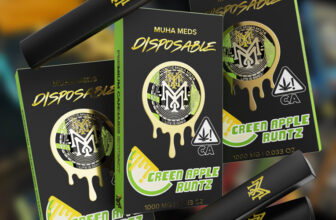
Cannabidiol (CBD) and tetrahydrocannabinol (THC) are the most prominent and intriguing compounds in the cannabis industry. With shifting legal boundaries and increasing public interest, understanding the unique features, advantages, and impacts of these substances becomes increasingly important.
CBD and THC play vital roles in a wide range of products, such as edibles and vapes from Burning Daily and other reputable brands. The vast amount of information available can be overwhelming.
This article discusses these compounds, providing a better insight into their varied effects and how they interact with the human body.
Chemical Structure
CBD (cannabidiol) and THC (tetrahydrocannabinol) may hail from the same plant family, but they interact differently with the cannabinoid receptors in the body.
Both compounds share the same molecular formula, C21H30O2, but the way their atoms are arranged diverges, resulting in distinct properties.
THC can bind directly with CB1 receptors found primarily in the brain, leading to psychoactive effects. CBD, however, does not bind as directly, which explains its non-intoxicating nature.
This fundamental distinction influences how each compound affects neurotransmitter release in the brain, impacting everything from mood to pain perception.
Psychoactive Effects
The psychoactive differences between CBD and THC are profound, with THC inducing euphoria and relaxation, often associated with the ‘high’ experience. This effect is due to THC’s affinity for binding to the CB1 receptors in the brain, altering normal brain communication and causing psychoactive effects.
CBD, in contrast, might influence other receptors, including serotonin receptors, which play significant roles in mood and anxiety regulation. By not binding directly with CB1 receptors, CBD can exert therapeutic effects without psychoactive outcomes. This is why it is usually an option for individuals looking for relief without alteration of their consciousness. A great way to enjoy the psychoactive effects is from a 2 gram cart.
Medical Benefits

The therapeutic landscapes of CBD and THC are rich and diverse, with both compounds showing promise in treating a variety of conditions.
THC’s effects are particularly beneficial for pain relief, nausea, and appetite stimulation, making it a valuable tool in treating conditions such as chronic pain, cancer-related symptoms, and muscle spasticity.
CBD, on the other hand, has been studied for its potential in treating anxiety, depression, epilepsy, and even some types of inflammation and pain.
With continuous research, the medical applications of CBD and THC are expanding, offering hope for treatments that are more natural and with fewer side effects than traditional medications.
Side Effects
Despite their natural origin, CBD and THC are not without their side effects. THC’s more common adverse effects include dry mouth, red eyes, slowed reaction times, and memory impairment. These are typically temporary but can be discomforting.
CBD is generally well-tolerated, with reported side effects being relatively mild, such as tiredness, diarrhea, and changes in appetite or weight.
The side effects of both compounds are usually dose-dependent, which highlights the importance of moderation and proper dosing for therapeutic use.
Interaction With Medications
The interactions of CBD and THC with other medications highlight the importance of careful consideration and consultation with healthcare providers.
CBD, in particular, is known to affect the liver’s ability to metabolize certain drugs, a phenomenon known as the grapefruit effect. This can lead to increased concentrations of these medications in the bloodstream and heighten their effects and side effects.
THC also has its interactions, though less is known about its specifics compared to CBD. Anyone considering using CBD or THC, especially those on other medications, should consult with a healthcare professional first.
Consumption Methods
The method of consumption plays a crucial role in the onset, intensity, and duration of the effects of CBD and THC.
Smoking or vaping offers immediate relief but comes with potential respiratory risks. Products like the Sluggers 2G Disposable provide an exceptional, fast, and effective experience that many people are drawn to. Edibles and capsules provide longer-lasting effects but with a delayed onset, making dosage control challenging.
Topical applications are ideal for localized relief without psychoactive effects, while tinctures offer more controlled dosing and a balance between onset speed and duration.
Selecting the right consumption method depends on the individual’s needs, preferences, and the specific conditions being treated.
Legal Status
Navigating the legal landscape of CBD and THC is akin to walking through a maze, with regulations varying widely from one jurisdiction to another.
CBD’s non-psychoactive nature has led to broader legal acceptance, and it’s often available in areas with strict cannabis laws.
However, the legal status of CBD can still depend on whether it’s derived from marijuana or hemp (the latter typically contains less than 0.3% THC by dry weight, making it legal under federal law in some places).
THC’s psychoactive properties complicate its legal status, with many regions strictly regulating or outright banning its use and possession.
Always checking local and federal laws is advisable to ensure compliance and understanding of what’s permissible where you reside or travel.
Conclusion
CBD and THC, while sourced from the same plant, exhibit distinct differences in chemical structure, psychoactive effects, legal status, and potential health benefits. When armed with the right information, individuals can navigate their options more effectively, making choices that align with their health, legal, and personal preferences.
Whether one is drawn to the therapeutic effects of CBD or the recreational allure of THC, understanding these compounds is key to maximizing their benefits and minimizing any risks.








